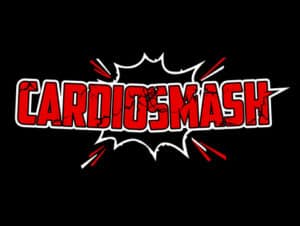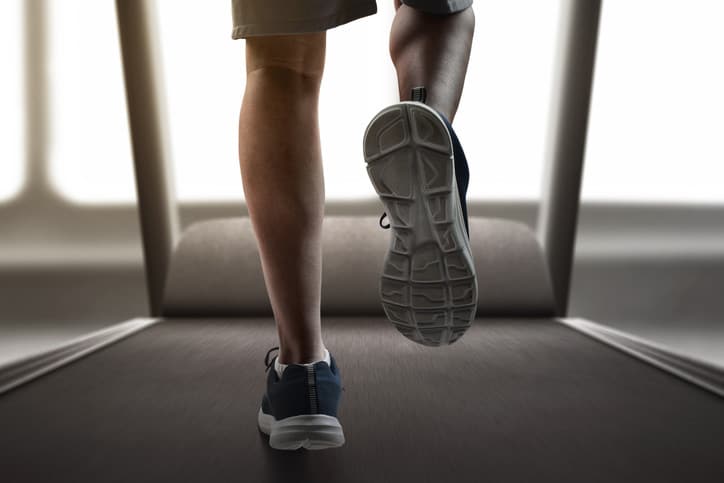When I go to the gym, I see a lot of the same people and some of them only ever seem to use the treadmills, stair-climbers, and elliptical machines. They go to the gym and do cardio 3, 4, or 5 days a week in many cases, but never do any strength training. Obviously all this exercise would be a good thing but, as someone who has always weight trained, it makes me wonder, is it OK to just do cardio? And if so, are there any disadvantages to doing only cardio?
So, what are the disadvantages of doing only cardio? While you may see weight loss, a high proportion of it may be lean mass, i.e muscle. Cardio burns calories during exercise but has little lasting effect on your metabolism, unlike weight training. If you are also doing too much cardio, this has additional drawbacks such as reduced or halted fat loss, joint pain, fatigue, injuries, and excessive strain on your heart. So, while doing cardio is great, it is not really enough by itself to get the best results, and too much can be unhealthy.
There’s different types of cardio, and they don’t all work your body the same way. While cardio in general has a ton of great benefits, there is a point of diminishing returns, and there’s also just plain excess. But you thought any type of workout is a good thing? It can be confusing to know what is a safe, effective amount of cardio training, so read on and we’ll discuss it.
What If You’re Only Doing Cardio?
Doing cardio in moderation, for example, one hour 3 times a week, or 30 mins a day, will certainly yield some benefits. These include:
- Fat Loss
- Strengthened Heart and Lungs
- Improved Stamina
- Improved Circulation
- Countless Others
Cardio should only be part of the picture when it comes to your exercise plan. If you only ever do cardio you will experience some disadvantages compared to someone who also lifts weights. These include:
- Decreased Lean Mass
- More Sluggish Metabolism
- Diminished Fat Loss
- Stress Response
- Boredom
However, if you were to include some strength training a few times a week those benefits would be increased, and some of the drawbacks of cardio would be mitigated.
So as you continue to reduce your lean mass, you will then reduce your metabolism and make it even harder to burn fat in the future. This is like getting a car with a smaller engine to get better gas mileage, which you will, but you’ll sacrifice performance (power). Lifting weights will help to maintain and even grow lean muscle mass, and this will allow you to burn more calories both during your cardio, and all day long.
Most people do cardio to lose fat, or keep it off. Cardio burns a pretty significant amount of calories so it makes sense that it would be popular for this type of fitness goal. The downside is that cardio does not generally build muscle. Sure, there are a few exceptions, such as swimming, but in most cases cardio will actually burn lean mass in addition to fat. This is especially true if you perform cardio on an empty stomach. Your body needs amino acids to perform physically, and if there’s no protein being consumed it will cannibalize your muscle tissue to get it.
In a nutshell, doing strength training makes you bigger and stronger, while only doing cardio makes you smaller, and weaker.
Is It Bad To Do Cardio Every Day?
Daily cardio is not necessarily a bad thing. The important variables are intensity and time. A daily 30 minute walk or 20 minute jog will not be too much for most people, but if you’re running for 2+ hours or doing H.I.T. every day, then that will start to have negative consequences over time.
Consider your overall weekly training volume. If you are doing 3-5 hours of cardio a week, that should be plenty for most purposes. If the cardio you perform is very low intensity, then more may be necessary, but if you incorporate some resistance training, you will hold on to more lean mass (muscle) and get better results than from cardio alone.
The exact amount of cardio that is too much will vary depending on the individual and their lifestyle, job, and level of conditioning. as well as factors like age and body type. It is safe to say that 5 hours a week is plenty for someone to achieve such fitness goals as fat loss, and keeping the heart and lungs strong.
Why Is Too Much Cardio Bad?
Excessive cardio can cause unnecessary strain on your heart due to being forced to work harder, for longer. Also, when your body has used all the available amino acids (proteins) from food it then starts to extract them from your muscles, including your heart. This effect also causes you to lose muscle mass, which is another negative effect associated with too much cardio.
How Much Cardio Is Too Much?
Unless your cardio just consists of walking, more that 10 hours per week of most types of cardio is probably too much. Swimming is another exception as it is no-impact and stimulates your muscles in a way that will encourage growth. But more intense types of cardio with more impact, particularly running, will wear you down over time and make you weaker. This is called over-training. Your body will let you know when you’re over-training. There will be soreness and other aches and pains that don’t heal.
While it doesn’t cause arthritis, too much high-impact cardio, like running, will really wear down your joints and can make any existing arthritis or joint problem much worse. We all know someone who used to run 10 miles a day that can barely walk now because their knees or hips are shot.
So, not all type of cardio are created equal. The lower the impact and the lower the intensity, the more you can do and not over-train. There are plenty of low impact machines in the average gym to do your cardio on.
Symptoms Of Too Much Cardio
- Lasting fatigue
- Joint pain
- Soreness that doesn’t go away
- Poor Sleep
- Reduced or stopped fat loss
- Excessive strain on the heart
- Increased risk of injury
So, be aware of these symptoms, be sure to get enough sleep and eat properly. Listen to your body and ease up when you need to. Go ahead and add some weight training or calisthenics to your exercise program. Better yet, switch them out for a couple of those cardio days! Then get stronger and leaner, not just skinnier.
Related Posts:
What If I Don’t Want To Lift Weights?
You don’t necessarily have to lift weights to gain some of the benefits of resistance training. Calisthenics and yoga, hitting a heavy bag or speed bag, are all other types of exercise that will do more than just burn calories.
Calisthenics is the use of body weight exercises like push-ups, pull-ups, and squats. It is totally possible to work virtually every muscle doing some sore of body weight movement. Get some resistance bands to increase the difficulty when these movements get too easy. An incredible physique can be built using just this type of training.
What’s The Best Cardio To Do Daily?
Walking. The best cardio for the average person to do daily is to walk for 30-60 minutes. Brisker walking is more effective, and throw in some hills to really increase the effort. Walking is low impact and burns more fat per calorie than running. Walk for an hour at 3 mph and a 180 lb person will burn about 400-500 calories. When combined with a caloric deficit of 500 calories per day, this will result in about 2 lb fat loss per week.
Swimming is also a great exercise to do daily as long as your don’t push yourself too hard. Steady laps or just having fun in the pool will help burn fat, strengthen the heart and lungs, and build a little muscle. Swimming works almost every muscle in your body, is super easy on the joints, and is a good exercise for those who are very out of shape (obese) as it allows them to exercise without carrying all that weight.

